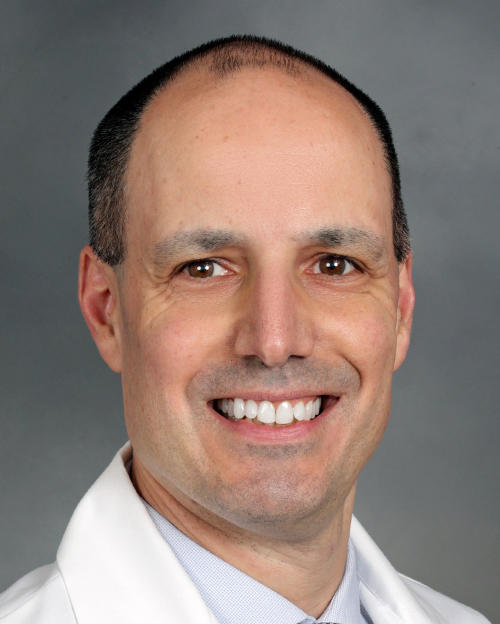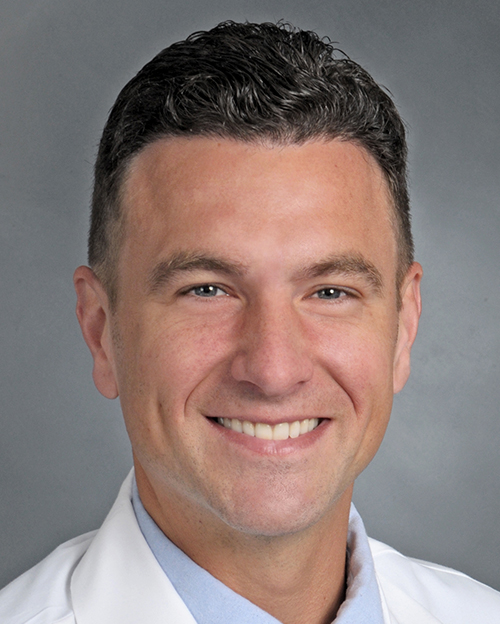 James Barsi, MD
James Barsi, MDPediatric Orthopaedic Surgeon
Clinical Associate Professor
Orthopaedics
 Brian Lynch, MD
Brian Lynch, MDPediatric Orthopaedic Surgeon
Clinical Assistant Professor
Orthopaedics
 James Barsi, MD
James Barsi, MD Brian Lynch, MD
Brian Lynch, MDScoliosis is a sideways curve of the spine and back with scoliosis curves sometimes following an “S” or a “C” shape. Scoliosis typically occurs in adolescents between 10 and 18 years old and is relatively common, affecting as many as 2 to 3 percent of the population. Here, Dr. Barsi and Dr. Lynch share their expertise in scoliosis diagnosis and treatments available at Stony Brook Children’s Hospital.
How is scoliosis diagnosed?
A child’s back is screened for scoliosis by looking for asymmetry in the shoulders, ribs or hips when standing and bending over. This is done annually by a school nurse or primary care provider during the pre-adolescent and adolescent years. If asymmetry is noted, children will usually need to be seen by a specialist for further evaluation. Curves are diagnosed by viewing standard spine radiographs (an image produced by x-rays, gamma rays or similar radiation). More recently, EOS® imaging is used to help diagnose patients.
What is EOS® imaging?
EOS is a low dose (a radiation dose that is 50 to 85 percent less than a general x-ray and 95 percent less than basic CT scans) 2D/3D imaging system that scans a patient standing up or sitting down. It shows a patient’s natural weight-bearing posture and allows the physician to see the interaction between the joints and the rest of the musculoskeletal system, particularly the spine, hips and legs. The Spine and Scoliosis Center at Stony Brook Orthopaedic Associates is the only site in Suffolk County to offer this type of low dose imaging.
What treatments are available for scoliosis?
There are many treatments options for patients who are diagnosed with scoliosis. A patient’s risk of progression (scoliosis becoming more severe as patients age), will ultimately guide a patient’s treatment plan. In general, curves below 25 degrees are considered mild curves and are typically observed and possibly prescribed physical therapy. Curves between 25 and 50 degrees are more moderate in nature, and children with growth remaining would be prescribed a brace. Curves greater than 50 degrees are considered severe and at that magnitude we begin having a conversation about surgical options. These are generalizations though, and every treatment plan is tailored for each specific patient.
If surgery is needed, what types of surgical procedures are available?
The gold standard in managing scoliosis from a surgical standpoint is spinal fusion, and the art and skill of the surgeon is to balance the surgical plan to address the unique nature of the curvature and the expectations of the patient. Techniques such as growth modulation using spinal tethering are available for children with moderate curves who have significant growth remaining. Many of the pediatric orthopaedic surgeons at Stony Brook Children’s Hospital are skilled in this technique.
Are there any new surgical treatments available to patients?
Vertebral body tethering is a novel technique used to correct scoliosis. Rather than stiff metal rods, tethering uses a strong, flexible cord to pull on the outside of a curve to straighten the spine. As you grow, you can permanently correct the scoliosis. After surgery, the spine is still able to flex and bend.
Can specific sports or activities have a negative impact on a spine with scoliosis?
Historically, children were advised to avoid exercises that would increase the flexibility of the spine, such as gymnastics or tumbling. However, recent evidence shows no link between sport played and curve progression or development. Though each patient’s case is different, we encourage them to continue playing whatever sport they wish as we monitor their diagnosis and treatment plan.
For an appointment with one of our pediatric orthopaedic specialists, call (631) 444-4233 or (631) 444-KIDS (5437). Visit stonybrook.info/ortho-peds to learn more.